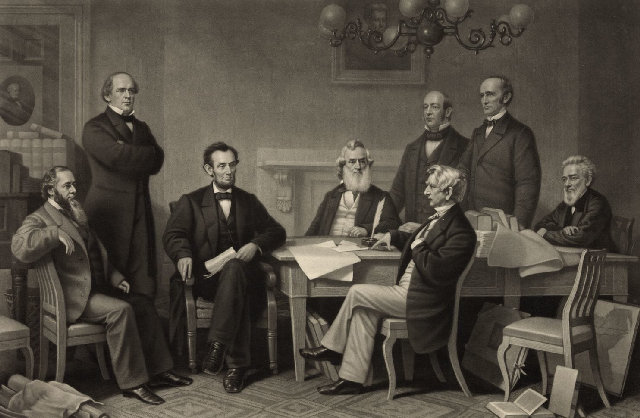Theme 3 : The 3rd Republic before 1914: a political system, a colonial empire
Chapter 1: The implementation of the Republican project
South Carolina senator John C. Calhoun warned on 4 March 1850: “I have, Senators, believed from the first that the agitation of the subject of slavery would, if not prevented by some timely and effective measure, end in disunion… You have thus had forces upon you the greatest and the gravest question that can ever come under your consideration: How can the Union be preserved?”. When the US constitution was adopted the North and the South were politically equal. However tensions grew all along the 19th century between the two parts of the US for this equilibrium increasingly no longer existed as population growth in the North provided more representation in Congress, Americans moved westward and new states joined the Union. Nowhere was this conflict more evident than in debates about slavery. The Civil War began in 1861 after decades of tensions between northern and southern states. The election in 1860 as US President of the Republican candidate, Abraham Lincoln, caused 7 southern states to secede and form the Confederate States of America. 4 more states joined them. The war ended in Confederate surrender in 1865. The conflict was the costliest and deadliest war ever fought in America with some 620,000 of 2.4 million soldiers killed, millions more injured and much of the South left in ruin.
What caused the Civil War? How did it become one of the bloodiest wars in history?
Cette leçon se veut une adaptation aux SELO et DNL anglais du thème 3 du programme d’histoire de première consacré à l’étude de la IIIème République avant 1914. Elle transpose le sujet aux États-Unis. Elle se divise en plusieurs parties dont la 1ère traite de la question de la Guerre de Sécession. L’ambition est de présenter à un public français un événement méconnu et pourtant fondateur de l’histoire et de la société américaine. Les fractures qui donnent naissance à la Guerre de Sécession et ses conséquences restent en effet plus que jamais au cœur de la société américaine d’aujourd’hui. La leçon se compose d’une série d’activités de recherche, d’expression orale ou écrite.
En documents attachés, plusieurs fichiers qui sont proposés dans un format ouvert afin de permettre leur modification par l’utilisateur :
– 6 fichiers d’activités :
- handout 1: Uncle Tom’s cabin by Harriet Bleecher Stowe (literature)
- handout 2: The underground railroad
- handout 3: Harriet Tubman’s struggle against slavery
- handout 4: The Gettysburg address
- handout 5: The Grey and the Blue
- handout 6: The emancipation proclamation by President A. Lincoln
Pour cette leçon, on pourra utiliser également quelques extraits du film Harriet de Kasi Lemmons (sorti en 2019) qui retrace l’histoire de l’esclave devenue héroïne pour sa lutte pour l’émancipation Harriet Tubman.

Vous souhaitez lire la suite ?
Actifs dans le débat public sur l'enseignement de nos disciplines et de nos pratiques pédagogiques, nous cherchons à proposer des services multiples, à commencer par une maintenance professionnelle de nos sites. Votre cotisation est là pour nous permettre de fonctionner et nous vous en remercions.












